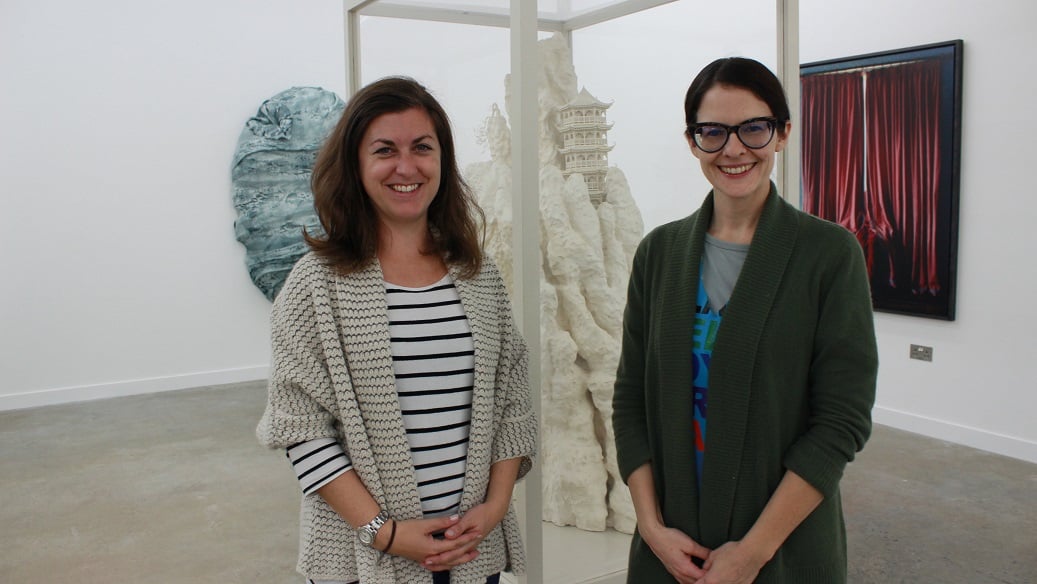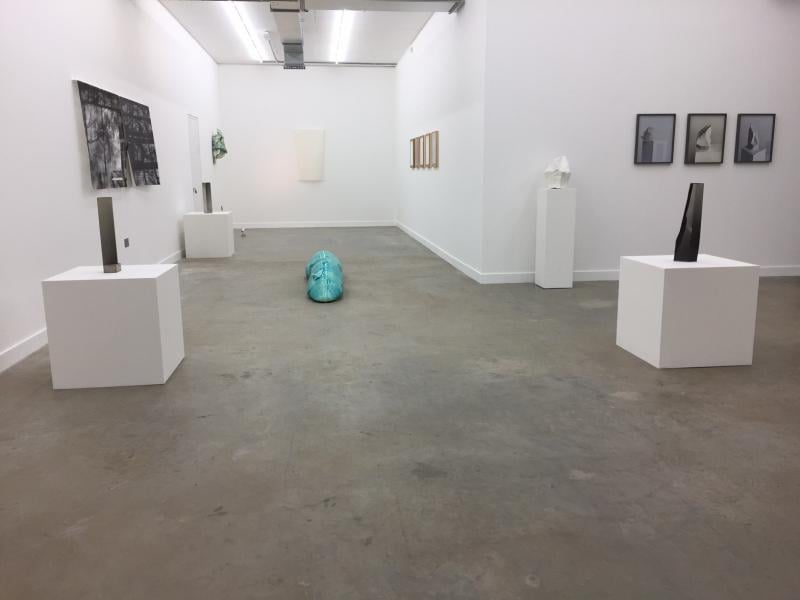
Becca Pelly-Fry (left) and Corrie Baldauf (right)
How to… break through as an artist
What should an emerging artist know? Director of the The Griffin Gallery, Becca Pelly-Fry, and Detroit-based artist, Corrie Baldauf, offer two different perspectives.
Becca Pelly-Fry, Director of The Griffin Gallery
Griffin Gallery acts as a platform for showcasing a wide range of work by emerging to mid-career artists, mainly through curated group shows. We offer a range of opportunities for artists, including a bi-annual open exhibition, an annual art prize and four different types of residencies for artists at different stages of their artistic careers. We focus on artists who have a particular engagement with materials and who demonstrate a concern for materiality across their practice as a whole. I come into contact with young and emerging artists (almost) on a daily basis, and from these experiences here are some key pieces of advice I would offer to anyone wishing to develop a career as a professional artist.
Present yourself clearly
One of the most common frustrations I have is an artist presenting themselves in a confusing or clichéd ‘art school’ manner. Put yourself in the shoes of the person looking at your application/proposal/website. What do you want them to know, and how do you want to come across? Try not to use the same statement you produced for your final show at art school. They all tend to sound the same. Keep it simple and clear. Your work should speak for itself, and the words simply add a little context.
Be selective
There are a multitude of prizes, residencies and other opportunities out there, many of them charging for entry. If you apply to everything, not only will you quickly bankrupt yourself, but you will also spend so much time writing and submitting proposals that you have little time to actually develop your practice. Opportunities are only valuable if they genuinely match with your needs and aspirations, so do your research. Only apply to residencies that will help you achieve something specific, or offer you some space for clear thinking at a time when you need it. Only apply to prizes or exhibition opportunities that will help you on your own particular path, or that will put your work in front of a jury that you respect.
Follow your intuition, not the market
Being an artist is one of the toughest jobs on the planet, so getting some commercial success can feel extremely gratifying, not to mention handy for the bank balance! However, the danger is falling into the trap of making work for the market. Not only is this risky, because the market is unbelievably fickle, but it will also ultimately create the feeling that you are not really fulfilling your creative self or growing as an artist.
Don't give up
The career trajectory of an artist is almost never a smooth upward curve. Even if you have some success straight after art school, sadly this doesn’t necessarily mean it will continue from there. There will be ups and downs throughout your career and there will be times when nothing is happening at all. Remember that you cannot control what happens around you, but you can control the way you respond. Don’t give up when things get tough. Those that survive, and even thrive, are the ones that never let the obstacles stop them in their tracks. Believe in yourself with all your heart and others will believe in you too.
Corrie Baldauf, Detroit-based artist
I have three simple pieces of advice: look closely; be agile; and think portable.
A residency is an agreement between at least two people. For an artist, it is an agreement to bring your creative energy to a studio, which is often a geographic location that is in some way unfamiliar.
In my interview with Becca Pelly-Fry and Mathew Gibson, I remember that Becca took the time to describe the unique aspects of the residency studio and Griffin Gallery's location. It is atypical for a residency studio to be next to a research and development chemistry lab and housed in ColArt's home office, and it was very clear that Becca was invested in understanding whether or not this environment would be inspiring for me. I believe that learning so much about an institution really builds trust between an artist and the people involved.
Time is valuable. If I decide to do something, I am going to visibly, audibly, and actively DO it. I got on an airplane in Detroit ready to make art, and I bounced off the plane in London, likely looking more like a cartoon character of an artist than a commuting entrepreneur. Mathew Gibson met me at the airport and that really made my first impression of London seem communal and navigable.
Excitement and a really big imagination got me to London, but the reality of actually accomplishing three months of work and communication with integrity requires an endless ability to look closely, be agile, and think portably.
When considering what I wish I knew or did earlier, I believe it would have been helpful for me to share more of my excitement about this residency with people in Detroit before I left. In many ways I am a very private and reserved person and I felt shy about sharing my good news. I knew that most people did not understand why or how I was going to London for three months.
Now, nearly two months into my residency with Griffin, I am able to look closely and see that there are so many connections I am capable of making between people in London and Detroit. It is an incredible reminder that being willing to travel alone is often the fastest way to fly – and who ever thought that wouldn't be at least a little bit scary?
Becca Pelly-Fry is Director of the Griffin Gallery and Head Curator for ColArt International.
griffingallery.co.uk
Corrie Baldauf is a Detroit-based artist, currently undertaking a 3 month international residency with Griffin Gallery.
corriebaldauf.com
Inset photo: Installation shot of Perfectionism III: The Alchemy of Making. Open until 18th November 2016. Image courtesy of Griffin Gallery.

Join the Discussion
You must be logged in to post a comment.